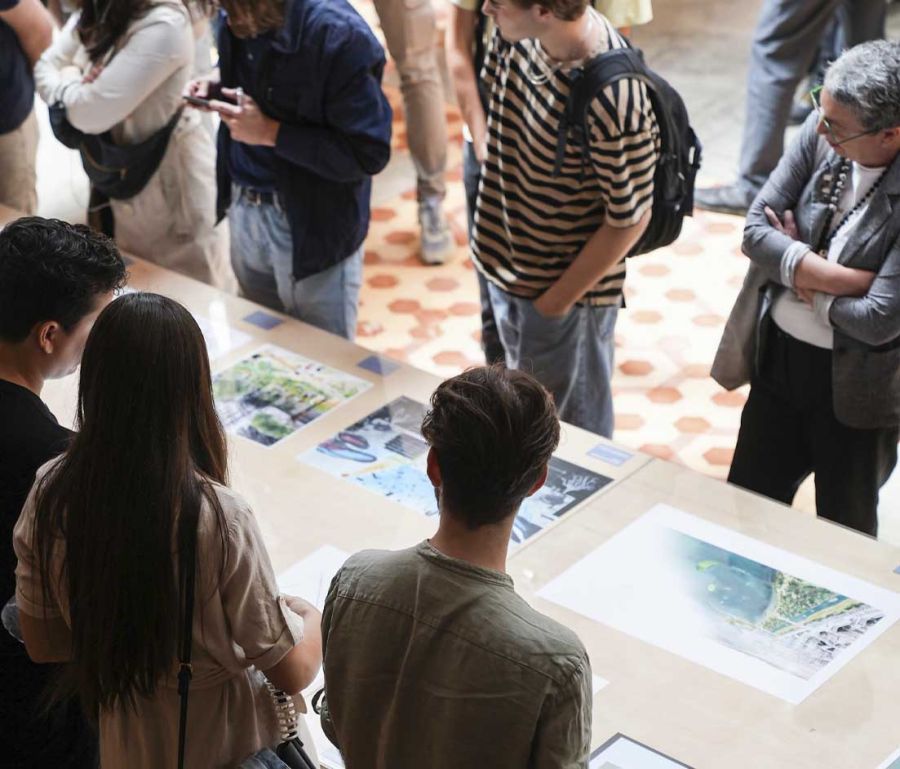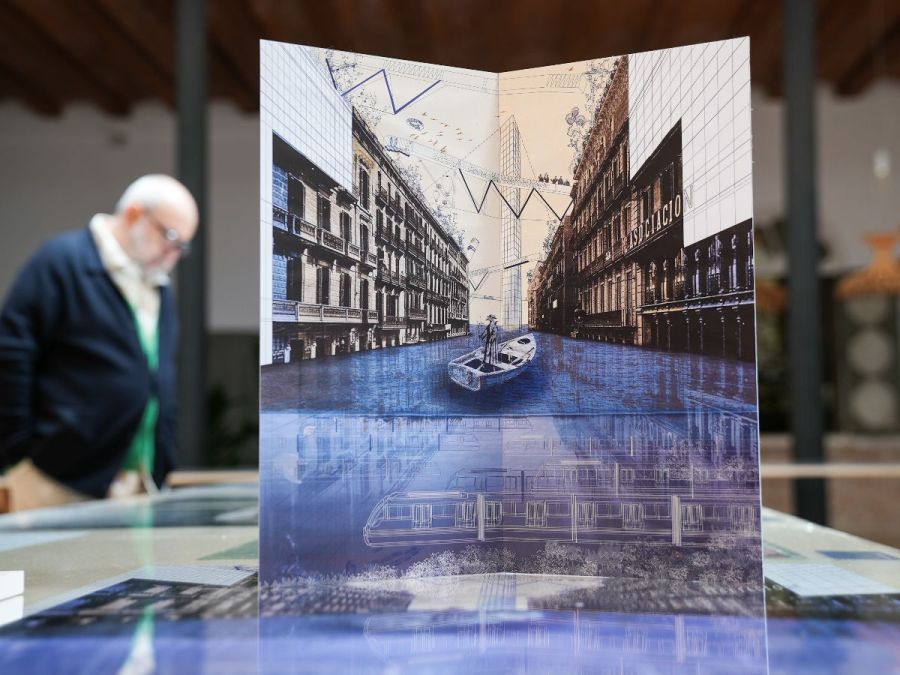99+ imaginaris | MODEL Festival
Thinking about the future of the city is part of the DNA of modern Barcelona. The Eixample Plan by Ildefonso Cerdà (1859) is the first great proof and the still living embodiment, so far-sighted and in transformation. To amend the flatness to Cerdà, Leon Jaussely was commissioned in 1905 to imagine a more monumental, hierarchical and close Barcelona in the city-garden.
With the GATCPAC and the avant-garde of the 1930s, Barcelona once again intensified its desire to plan for a functional, technological and egalitarian future, in which even the concept and form of the superilles was already present. And of which the most courageous proposal was the Ciudad de Reposo y de Vacaciones project (1933-1934), located on an 8-kilometer strip of coastline, from the Llobregat Delta to the Castelldefels escarpment. In this popular city of leisure and exercise, a large number of publicly managed and socialized facilities were proposed.
At the same time, Nicolau Maria Rubió y Tudurí, from his independent and eclectic point of view, invented a “Future City” between the Plaza de España, the port and the airport, in tune with the ambitions of the 1929 International Exposition and inspired by the Italian futurists, Hilberseimer’s Vertical City of 1927 and the skyscrapers of Chicago and New York.
The tense lethargy during the Franco dictatorship had exceptions, with unrealized projects, such as the rows of rationalist blocks of affordable housing of 1949 by Medios, Moragas, Torcido, Techos, Balcells and Perpiñá; the imaginations of water, light, colors and music by Carles Buigas; or the technological experiments of the 1960s, which left a fragment of megastructure and city to space, handcrafted and built in Sant Just Desvern, the Walden 7, directed by Ricardo Bofill and structured by Anna Bofill.
And the Barcelona model, laboriously conceived at the beginning of democracy and implemented with the impulse of the 1992 Olympic Games, embodied this desire for a contemporary and democratic city, starting to dignify and extend the spaces, and to create public facilities for the neighborhoods.
This intention and need to rethink the future of the city is still alive today. With the vision suggested by this call for drawings, with imagination and radical optimism, drawing architectures that allow us to redefine the conditions of our present and with this, open ourselves to the possibility of different, more equitable and just futures. These proposals come from architects of very different generations, who have imagined fragments of a future Barcelona, from themselves and from very different cities. A rethinking that follows very diverse and complex paths, scales and strategies, but also tends towards renaturalization, neighborhood scale and proximity, emphasis on different ways of living, affordable housing, remaking the city and researching alternatives. This is the invitation to debate.




















